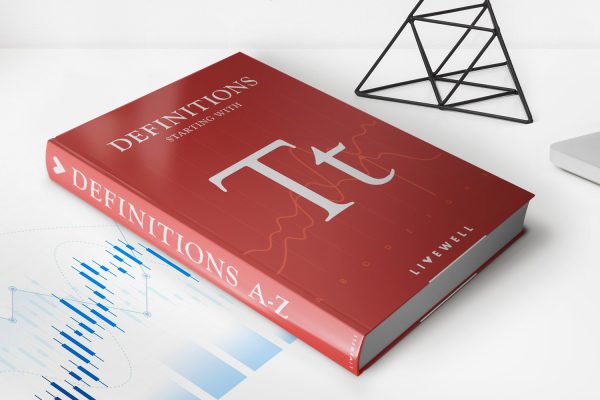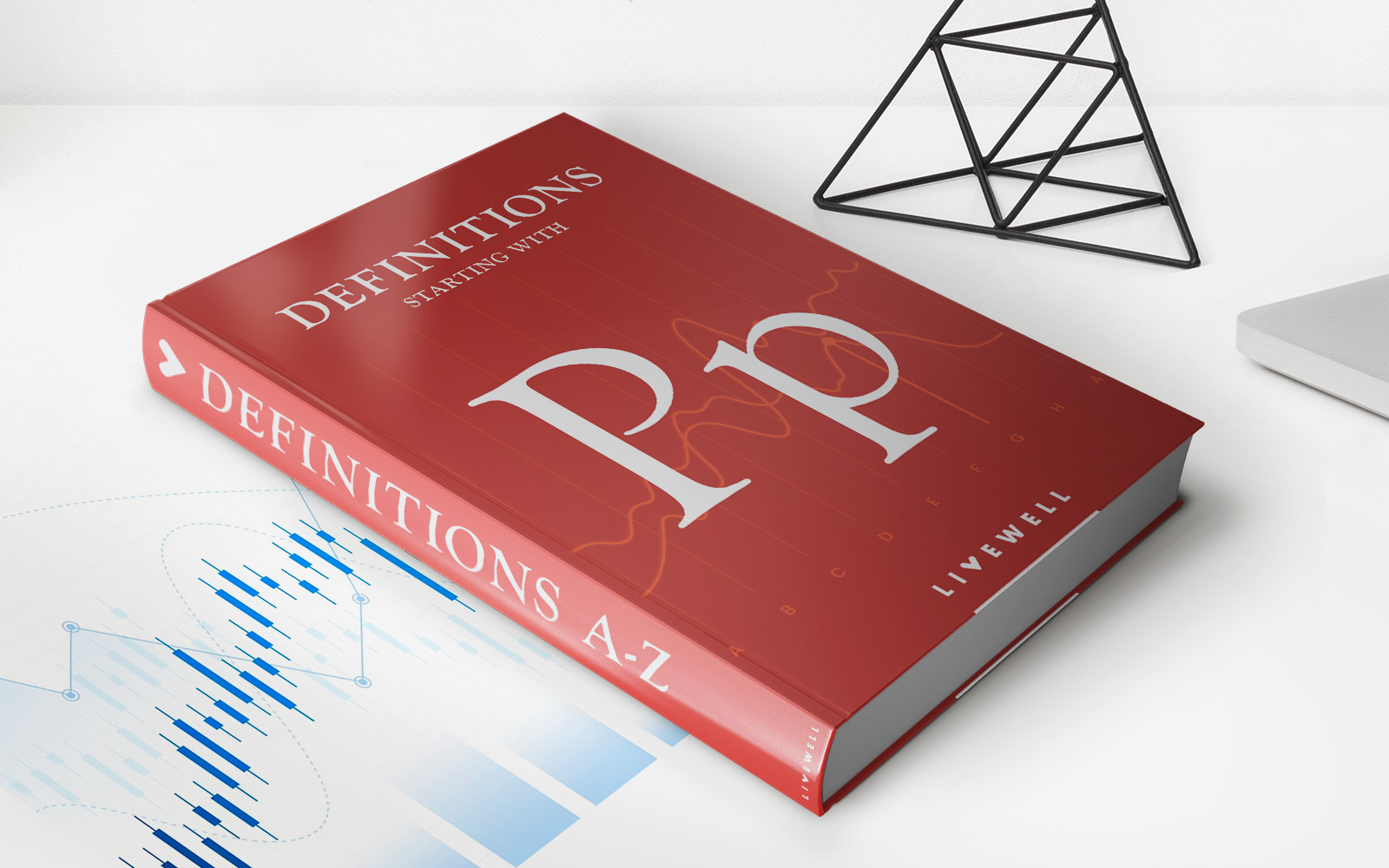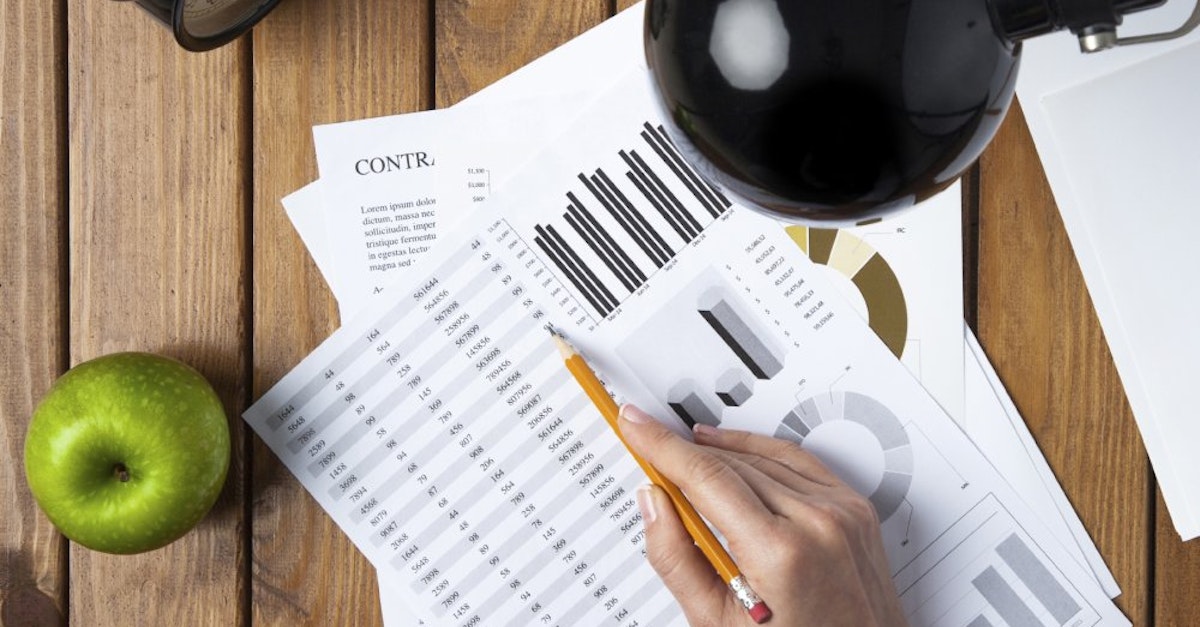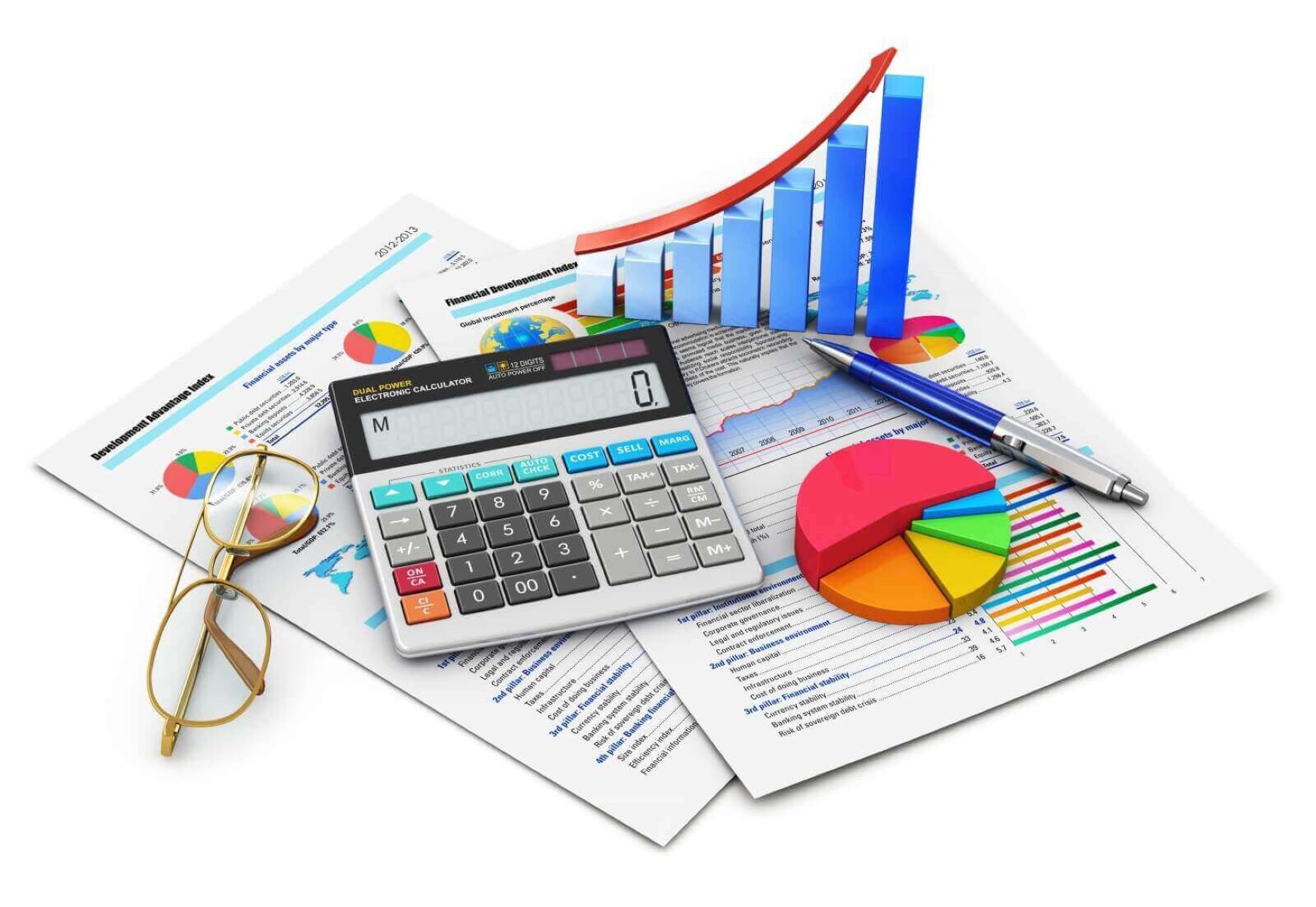Home>Finance>What Is Required When Opening A Checking Account
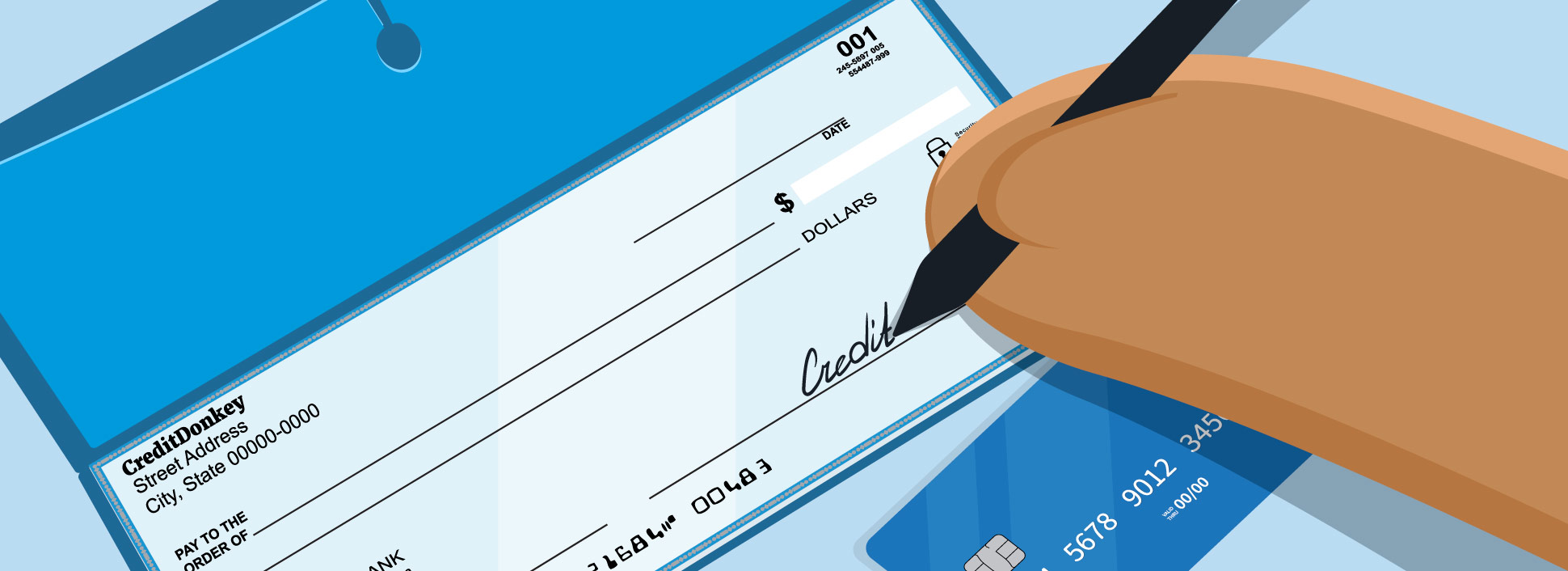

Finance
What Is Required When Opening A Checking Account
Modified: December 29, 2023
Discover what is required when opening a checking account and get your finances in order. Find out the essential steps and documents needed to begin your banking journey.
(Many of the links in this article redirect to a specific reviewed product. Your purchase of these products through affiliate links helps to generate commission for LiveWell, at no extra cost. Learn more)
Table of Contents
Introduction
Opening a checking account is an essential step towards managing your finances effectively. Whether you’re new to banking or looking for a better account to suit your needs, understanding the requirements and documentation involved is crucial. A checking account provides a convenient and secure way to deposit your money, make payments, and manage your day-to-day expenses.
When it comes to opening a checking account, financial institutions have certain criteria and documentation requirements that you need to fulfill. These requirements are in place to ensure that both you and the bank are protected and that the account operates smoothly.
In this article, we will guide you through the documentation and personal information required when opening a checking account. We will discuss the importance of identification documents, social security numbers, proof of address, and the initial deposit. Additionally, we’ll explore different checking account options and provide tips on how to compare and choose the right account for your needs.
By understanding these requirements and options, you can approach the process of opening a checking account with confidence and ensure that you select an account that suits your financial goals and preferences.
Documentation Required
When opening a checking account, you will need to provide specific documentation. This is to verify your identity and ensure compliance with banking regulations. The exact requirements may vary slightly depending on the financial institution and the type of account you’re interested in. However, there are a few standard documents that you will typically need to provide.
The following are the common documents required when opening a checking account:
- Proof of identity
- Proof of address
- Social Security number
- Initial deposit
Let’s take a closer look at each of these requirements.
Proof of identity: This is essential to establish your identity. You will need to provide a valid government-issued identification document such as a driver’s license, passport, or state ID. The bank needs this document to confirm that you are who you claim to be.
Proof of address: You will generally be required to provide a document that shows your current address. This could be a utility bill, rent agreement, or any other official document issued within the last three months that clearly displays your name and address.
Social Security number: Your social security number is used by the bank to verify your identity and assist with financial reporting. This number is crucial for taxation purposes and allows the bank to comply with anti-money laundering regulations.
Initial deposit: Most banks require an initial deposit to open a checking account. The amount varies depending on the bank and the type of account you choose. This deposit serves as your first balance in the account and is subject to the minimum balance requirements specified by the bank.
It’s important to note that these requirements may vary slightly among financial institutions. Some banks may have additional requirements, such as employment verification or references. It’s advisable to check with the specific bank you plan to open an account with to ensure you have all the necessary documentation.
Now that we have a clear understanding of the documentation required, let’s explore the personal information you’ll need to provide when opening a checking account.
Personal Information
When opening a checking account, you will need to provide certain personal information to the bank. This information is necessary for the bank to establish your identity and comply with various financial regulations. It is important to provide accurate and up-to-date information to ensure a smooth account opening process.
The personal information typically required when opening a checking account includes:
- Full Name
- Date of Birth
- Contact Information
- Employment Information
Full Name: You will be asked to provide your full legal name, including your first name, middle name (if applicable), and last name. It is important to provide your name exactly as it appears on your identification documents to avoid any discrepancies.
Date of Birth: Banks require your date of birth to confirm your age and ensure compliance with legal regulations. This information is necessary to establish your identity and eligibility to open and operate a checking account.
Contact Information: You will need to provide your current contact information, such as your residential address, phone number, and email address. This allows the bank to communicate with you regarding the account and send important notifications, statements, and other information.
Employment Information: Some banks may ask for your employment information, including your current employer’s name, job title, and work address. This information helps the bank understand your financial situation and assess your ability to maintain the account.
It is important to provide accurate and truthful information when opening a checking account. Any false or misleading information can result in the account being closed, and in some cases, legal consequences. Banks have stringent regulations in place to prevent fraud, money laundering, and other financial crimes. By providing accurate personal information, you assist the bank in meeting these requirements.
Now that we have covered the personal information needed, let’s move on to discussing the identification documents required when opening a checking account.
Identification Documents
When opening a checking account, you will need to provide identification documents that establish your identity and validity. These documents are necessary for the bank to comply with legal and regulatory requirements, ensure the security of your account, and prevent fraudulent activities.
The following are common identification documents required when opening a checking account:
- Driver’s License
- Passport
- State ID Card
- Military ID
Driver’s License: A driver’s license is one of the most commonly accepted forms of identification. It is an official government-issued document that includes your photograph, full name, date of birth, and address. Presenting a valid driver’s license can help expedite the account opening process since it provides all the necessary information in a single document.
Passport: A passport is an internationally recognized identification document. It verifies your identity and citizenship and is especially useful if you do not have a driver’s license. When presenting a passport, ensure that it is not expired and is in good condition.
State ID Card: If you do not have a driver’s license, a state ID card can be used as an alternative identification document. It typically contains similar information as a driver’s license, such as your photograph, full name, date of birth, and address.
Military ID: If you are an active-duty or retired military personnel, a military ID card can be used to establish your identity. It is an official identification document issued by the military and contains your photograph, full name, and unique identification number.
It is important to note that the bank may require you to provide multiple forms of identification documents, especially if you do not have a driver’s license or passport. They may ask for additional supporting documents such as a birth certificate or social security card.
When providing identification documents, ensure that they are valid, not expired, and in good condition. Banks have strict guidelines and may reject a document if it is not in acceptable condition or if they suspect it to be forged or altered.
Now that we have covered the identification documents required, let’s move on to discussing the importance of providing your Social Security number when opening a checking account.
Social Security Number
When opening a checking account in the United States, providing your Social Security number (SSN) is a common requirement. Your SSN is a unique nine-digit number issued by the Social Security Administration (SSA) and is used for various purposes, including identity verification and tax reporting.
The importance of providing your SSN when opening a checking account includes:
- Identity Verification: Your SSN helps the bank verify your identity and ensure that you are who you claim to be. This is crucial for the bank to comply with anti-money laundering (AML) regulations and protect against fraud.
- Tax Reporting: Banks are required to report certain financial activities to the Internal Revenue Service (IRS). This includes reporting interest earned on your checking account. Your SSN helps the bank associate these transactions with your account and generate accurate tax reports.
- Financial Reporting: Your SSN enables the bank to report your account activities to credit reporting agencies. This information is used to determine your creditworthiness and may impact your ability to obtain loans, credit cards, or other financial services.
It is important to provide your SSN accurately and ensure that it matches the information associated with your name. Banks have strict safeguards in place to protect your personal information and comply with data privacy laws.
If you are concerned about the security of providing your SSN, it is worth noting that banks have robust security measures and encryption protocols in place to protect your sensitive information. Additionally, by providing your SSN, you enable the bank to monitor your account for suspicious activities and protect you from potential fraud.
If you are a non-U.S. resident or do not have a Social Security number, some banks may accept an Individual Taxpayer Identification Number (ITIN) or other alternative forms of identification. It is advisable to check with the specific bank to understand their requirements for non-U.S. residents.
Ensuring the accuracy and security of your SSN when opening a checking account is essential for a smooth banking experience. Now that we have covered the importance of providing your SSN, let’s move on to discussing the documentation required to verify your address.
Proof of Address
When opening a checking account, you will need to provide proof of address to verify your current residence. Banks require this documentation to ensure that they have accurate contact information and to comply with legal and regulatory requirements.
The following are commonly accepted documents for proof of address:
- Utility Bills: A recent utility bill, such as a water bill, electricity bill, or gas bill, can serve as proof of address. The bill should display your name and residential address. Ensure that the bill is current and issued within the past three months.
- Bank Statements: If you have an existing bank account or credit card, you can provide a recent bank statement as proof of address. This statement should display your name and residential address as per the bank’s records.
- Lease or Rental Agreement: If you are renting a property, you can provide a copy of your lease or rental agreement. This document should include your name and the address of the property you are currently residing in.
- Government-issued ID Card: Some government-issued identification cards, such as a state ID card, may include your residential address. This can be used as proof of address if it meets the bank’s requirements.
It is important to provide a valid and current document as proof of address. Ensure that the document displays your name, residential address, and is issued within the specified timeframe set by the bank.
If you have recently moved and do not have any of the documents mentioned above in your name, some banks may accept alternative documents. These may include a notarized letter from your landlord or a letter from a government agency verifying your address. It is recommended to check with the specific bank for their acceptable alternatives.
It’s worth mentioning that providing false or fraudulent documentation is illegal and can result in severe consequences. Banks have stringent procedures in place to detect and prevent fraud, and any fraudulent activity can lead to the immediate closure of your account and potential legal action.
Now that we have covered the proof of address requirements, let’s move on to discussing the importance of the initial deposit when opening a checking account.
Initial Deposit
When opening a checking account, one key requirement is the initial deposit. This refers to the amount of money you need to deposit into the account to activate and maintain it. The specific amount required as an initial deposit can vary depending on the bank and the type of checking account you choose.
The initial deposit serves multiple purposes:
- Account Activation: The initial deposit is necessary to activate your checking account. By depositing the required amount, you signal your intent to open the account and begin using it for your financial transactions.
- Minimum Balance Requirement: Some checking accounts have minimum balance requirements, meaning that you need to maintain a certain amount of money in the account at all times. The initial deposit often counts towards this requirement, ensuring that you meet the minimum balance criteria.
- Transaction Capability: Depositing money into your checking account gives you the ability to make transactions such as writing checks, making electronic payments, and withdrawing cash. The initial deposit ensures that your account has sufficient funds to cover these transactions.
The required initial deposit can vary widely depending on the bank and account type. Some checking accounts may require a minimal amount, while others may have higher deposit requirements, particularly for premium or interest-bearing accounts.
It’s important to review the account terms and conditions provided by the bank to understand the specific initial deposit requirement. You can also compare different banks and their checking account offerings to find one that aligns with your financial situation and preferred initial deposit amount.
If you’re unable to meet the initial deposit requirement for a particular account, don’t worry. Many banks offer no or low minimum deposit options, allowing you to open a checking account with a smaller amount. Additionally, certain banks may offer special promotions or waive the initial deposit requirement based on certain criteria, such as maintaining a direct deposit or being a student.
Keep in mind that the initial deposit is not a fee but rather a requirement to activate and use your checking account. After the initial deposit, you can freely access and manage your money, make transactions, and enjoy the benefits of having a checking account.
Now that we have covered the importance of the initial deposit, let’s move on to discussing the various options and features available when choosing a checking account.
Account Options
When opening a checking account, you have several options to choose from, each with its own features and benefits. It’s important to understand these options so you can select an account that best suits your financial needs and preferences.
Here are some common account options to consider:
- Basic Checking Account: This is a standard checking account that offers basic features such as check writing, debit card usage, and online banking. Basic accounts typically have no or low monthly fees and are suitable for individuals who have minimal banking needs and prefer simplicity.
- Interest-Bearing Checking Account: An interest-bearing checking account allows you to earn interest on the funds deposited in your account. This type of account is beneficial if you maintain a higher balance and want to earn some additional income. However, interest rates on checking accounts tend to be lower than dedicated savings accounts.
- Student Checking Account: Many banks offer special checking accounts designed specifically for students. These accounts often have lower minimum deposit requirements, no monthly fees, and additional perks such as waived fees on ATM withdrawals or overdraft protection.
- Joint Checking Account: A joint checking account can be opened by two or more individuals who share responsibility for managing the account. This option is commonly used by couples or family members who want to combine their finances and easily access and manage shared expenses.
- Online Checking Account: Online checking accounts are offered by online-only banks and provide convenient access to your money through digital channels. These accounts often offer features like mobile banking, remote check deposit, and access to a large network of fee-free ATMs.
When choosing an account, it’s important to consider factors such as fees, account access, customer service, and any additional benefits or perks offered by the bank. You may also want to think about your expected transaction volume, ATM access, and the bank’s reputation for security and reliability.
To make an informed decision, compare the account options available to you and assess which account aligns with your financial goals and lifestyle. Reading customer reviews and consulting with bank representatives can also provide valuable insights.
Now that we have explored the various checking account options, let’s discuss how you can effectively compare and evaluate different accounts to find the right one for your needs.
Compare Checking Accounts
When choosing a checking account, it’s important to compare different options to ensure you select the one that best meets your financial needs and preferences. By considering various factors, you can make an informed decision and find an account that offers the features and benefits that are most important to you.
Here are some key factors to consider when comparing checking accounts:
- Fees: Examine the fee structure of each account, including monthly maintenance fees, ATM fees, overdraft fees, and any other potential charges. Look for accounts with low or no monthly fees and consider how fee waivers can be obtained.
- Minimum Balance Requirements: Determine whether the account has a minimum balance requirement and consider if it aligns with the amount of money you plan to keep in the account. Avoid accounts with high minimum balance requirements if you anticipate fluctuating balances.
- Interest Rates: If you’re interested in an interest-bearing checking account, compare the APY (Annual Percentage Yield) offered by different banks. Consider how the interest is calculated and whether any conditions or limitations apply.
- Online and Mobile Banking: Assess the online and mobile banking features provided by each bank. Look for user-friendly interfaces, convenient access to account information, mobile check deposit capabilities, and the availability of online bill payment and budgeting tools.
- ATM Access: Check if the bank has a wide network of ATMs or if they reimburse ATM fees for using out-of-network machines. Consider the convenience of ATM access, especially if you frequently need to withdraw cash or make deposits.
- Customer Service: Research the reputation of the bank for customer service. Look for reviews and ratings to assess how responsive and helpful the bank’s representatives are in resolving issues or answering questions.
- Additional Features and Perks: Consider any additional features or perks offered by the bank, such as mobile wallet integration, rewards programs, or discounts on other financial products. These extras can add value to your banking experience.
As you compare different checking accounts, it’s important to prioritize the features that are most important to you. Consider your financial goals, transaction habits, and lifestyle to determine which account aligns best with your needs.
Take the time to read the terms and conditions provided by each bank to fully understand the account’s features, fees, and limitations. If you have any questions or need clarification, don’t hesitate to reach out to the bank’s customer service representatives.
By comparing checking accounts and considering these factors, you can choose an account that suits your financial goals and preferences, providing you with a hassle-free banking experience.
Now that we have explored the process of comparing checking accounts, let’s summarize the key points discussed in this article.
Conclusion
Opening a checking account is an important step towards managing your finances effectively. By understanding the requirements and documentation involved, you can navigate this process with confidence and select an account that suits your needs.
In this article, we discussed the documentation required when opening a checking account, including proof of identity, proof of address, your Social Security number, and the initial deposit. We also explored the significance of providing accurate personal information and identification documents to ensure a smooth account opening process.
We delved into different checking account options, such as basic accounts, interest-bearing accounts, student accounts, joint accounts, and online accounts. Each option offers its own features and benefits, allowing you to choose the account that aligns with your financial goals and preferences.
To make an informed decision, we emphasized the importance of comparing checking accounts based on factors such as fees, minimum balance requirements, interest rates, online and mobile banking capabilities, ATM access, customer service, and additional features or perks offered by the bank.
By considering these factors and comparing different account options, you can select a checking account that best meets your needs, whether it’s minimizing fees, earning interest, or accessing convenient digital banking services.
Remember to carefully review the terms and conditions of each account and seek clarification from the bank if needed. Take the time to explore your options and prioritize the features that are most important to you.
Opening a checking account is a significant step towards gaining control over your finances and managing your day-to-day expenses. Choose wisely, and enjoy the convenience and security that a checking account can provide.
Thank you for reading this comprehensive guide on opening a checking account. We hope this information has been helpful and will assist you in making informed decisions when it comes to managing your financial matters.





